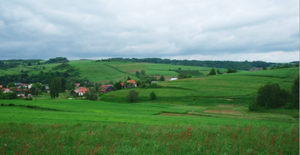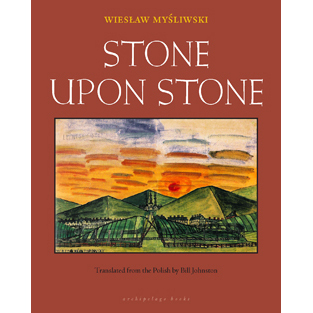 We all have crossroads in our lives, where part of our story is ending and a new part is beginning. Sometimes these crossroads contain decisions that must be made, truths that must be acknowledged, or adversity that must be overcome. All crossroads provide us with something extraordinary if we are willing to embrace it: a chance to engage in close, personal, and possibly uncomfortable contact with ourselves and to explore our sense of identity. Two and a half years ago I found myself at one such crossroads; I decided to harness the magic and possibility of the moment by prolonging it and heading out on a four month long round-the-world adventure that would include traveling alone to mountain ranges, valleys, forests, and cities, as well as meeting up with my mother to explore the areas of Poland and Slovakia where our ancestors are from.
We all have crossroads in our lives, where part of our story is ending and a new part is beginning. Sometimes these crossroads contain decisions that must be made, truths that must be acknowledged, or adversity that must be overcome. All crossroads provide us with something extraordinary if we are willing to embrace it: a chance to engage in close, personal, and possibly uncomfortable contact with ourselves and to explore our sense of identity. Two and a half years ago I found myself at one such crossroads; I decided to harness the magic and possibility of the moment by prolonging it and heading out on a four month long round-the-world adventure that would include traveling alone to mountain ranges, valleys, forests, and cities, as well as meeting up with my mother to explore the areas of Poland and Slovakia where our ancestors are from.
It was late May 2008 when my mother and I flew into Krakow; I was eager to feel a connection to the land of my ancestors, and my mother was eager to fulfill her promise to her departed father and grandmother to visit the hometowns of their families. While in Slovakia my mother and I were able to locate the correct cemeteries, gravestones, and in one town, our direct relations that had been previously unknown to us; in Poland, however, we found less tangible evidence of our heritage, but still encountered parts of ourselves and our history in the landscapes, the buildings, and the people.
>We knew that my grandmother’s family was from a place called Zawadka, near Rzeszów, and we knew that a member of this family had worked at Łańcut Castle. Only one of the half dozen Zawadkas in southeastern Poland were near both Łańcut and Rzeszów, so we began our adventure by seeking out the town of Zawadka near Strzyżów, just west of Rzeszów. We became lost, however, driving in the beautiful countryside and farm fields, where villages were so small they were easy to miss. We found a few lovely churches and cemeteries, but we required the assistance of many locals (with whom we communicated in a mix of pidgin Polish, Russian, and sign language) before we were able to find the church and cemetery of Zawadka. The rolling hills of this area were lovely, and it was here that I first found myself feeling a sense of identity and belonging to the land, a feeling I had only encountered previously in Ireland, the home of my father’s ancestors. Just as in rural Ireland, we found the cemeteries of rural Poland to be orderly, tidy, and filled with flowers and family members at work tending graves, planting, weeding, etc.
Leaving the hills of Zawadka behind, we headed east for Łańcut Castle, a 17th century palace in southeastern Poland, where my great-grandfather’s great aunt Costanza Zabek worked. My mother and I arrived in Łańcut and were pleased to discover we could stay in the wing of the palace that had been turned into a hotel. According to family stories, Aunt Costanza was impregnated by a visiting Count Potocki, and that night and next morning as we walked the halls that Aunt Costanza had walked, and saw the rooms she had seen, we felt both that we were connected to her and that we were honoring her. During the tour of the castle, we found ourselves looking at the portraits of various Count Potockis and wondering who might have been the father of Costanza’s child. It could have been any number of Potocki males who claimed the title of “count” and lived in places like Paris or Vienna and held important positions in the Austrian Empire. Later, we prayed in the village church, probably the very same church that Aunt Costanza had prayed in when she discovered she was pregnant.
Twenty-five miles north of Łańcut we visited the town we believe my grandfather’s grandfather, Luke Sencen, is from. Luke always said he was from Stare Miesto, in Galicia, near the borders of Ukraine, Slovakia, and Romania. His family assumed that he just meant he was from an “old town” section of a Slovak city (his wife was Slovak), but my mother insists that his description puts him in the Lemko/Ruthenian territory of southeastern Poland. As chance might have it, there is in fact a small rural village called “Stare Miesto” just north of the town of Lezajsk. Stare Miesto was tiny, lovely and idyllic, with a small village church with an icon of Mary, a cemetery, lovely streams and rivers, log houses with lace curtains and blue paint between the logs, and people using their horses to pull plows in the fields.
After a night’s stay in Sanok, my mother and I drove through more farmlands to Dukla, where my great-great grandmother is from. The village of Dukla, though economically depressed, is in a beautiful area and has many sacred places, including Saint John of Dukla’s hut and holy well. Dukla, and the Dukla Pass (a pass through the Carpathian Mountains between Poland and Slovakia, set very close to Ukraine) are both stunning in landscape, but have also been the site of multiple battles in both of the World Wars. In WWII the Nazis maintained control of the palace in Dukla, but the Russian army came through, slowly driving out the Germans and aiming to head into Slovakia. Slovak anti-Nazi insurgents joined the battle against the Nazis, and the village of Dukla was mostly destroyed in the week long fight. The Dukla Pass, though now open to easy crossing due to the EU, is a moving drive as one passes monument after monument. This area was a strong reminder of what lingers across southeastern Poland: the memory of war, death and destruction. The area was also a strong reminder of what this region has always been: a stunningly beautiful land where faith is strong and the earth is fundamental for the sustainment of life.
Every year before Christmas we make an Eastern European feast at my house. My mother, as she rolls out the dough for the pierogi, says she sees her babci’s hands on the roller, and her babci-babci’s. Traveling to the lands of my babcis with my mother during my moment of personal crossroads granted me the same sense of belonging to a lineage of Polish women that my mother had always felt. Looking out on the hills in the lower Bieszczady, I felt not only a deep connection to the land, but a deep connection to my ancestors who also had looked out on this landscape, known these trees, and drank from these streams. As we walked the hills of our ancestors, visited where they had passed their lives, and studied their history and their pain, we honored them and we honored their blood that runs within our veins. I can’t imagine a closer encounter with myself than the chance to know and honor my mother, her mother, and all of her mothers before her.
CR




Where did you find records concerning Galicia? We were told that both World War I and World War II destroyed all of the records about our heritage Subsequently, it was difficult for my father to get Top Secret clearance when he was in the Marine Corps.
I just found your blog. What a beautifully written post. My grandmother comes from the same area, she was from Zawadka. I was able to visit in the 90’s but had just a short time and was there with a Polish friend of a friend who spoke little English. I was able to see the old wooden church and inside on one of the icons was written that it was a gift of the Radko family in America, my grandmothers family. At that women I too had the feeling that I was standing int he footsteps of ancestors.